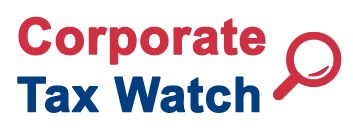Look At How Shaq became a Successful Business Man!
September 16, 2016 by admin
Filed under Business News

We all know who Shaquille O’Neal is; the notorious 7 foot 1 inch basketball player who has been playing in the NBA League for 19 years!
When we were all watching him play in the court, we probably all never thought that this guy would make it BIG in the business world. We probably all wondered what this man was going to do when he retires from basketball at some point during his basketball career.
Well guess what… This man has made it, and he is probably more successful than most people in the world! In fact, he even already made a name for himself out there before he even retired as a “media personality and commentator.”
Wanna know how much Shaq is worth today?
According to The Richest Mag, his estimated worth is a whopping number of more than a quarter of a BILLION dollars! (More than $350 million to be exact) That’s insane! Well, of course, along with his earnings from his long-playing career in basketball.
WHAT HE DID AFTER HIS RETIREMENT FROM THE NBA
Shaq has been venturing off into many different aspects of business, and actively looking to find something that will not only peak his interest, but also find opportunities for growth in his earnings from NBA. Although he is still somewhat active in the media, he is also looking for ways to grow his money by investing his money carefully without exposure of his business activity in the media.
Most of us probably know that he owns restaurant franchises like 5 Guys, but do you know how many he actually owns?
If you guess a number less than 100, then you’re just like most people! If not, good for you! He owns 155 different locations! Think about it, he owns 155 locations, he gets a percentage from each of the franchise’s annual profits, and lets assume that each of these franchises roughly nets him about $150,000 per year. Now multiply that number times 155. What do you get? 150,000 x 155 = $23,250,000! Shaq is literally making $23 million annually! WOW! (You can buy lamboghinis left and right!)
Not only does he own these franchises, he also made deals with food companies like Fruity Pebbles, Muscle Milk, Vitamin Water, and AriZona Cream Soda. One thing that makes Shaq a great business man is his good ethics, he chose these companies because he actually consumes these products. This will make him more genuine as an actual human being rather than a robotic psychotic business bot.
We will not get into too much detail here, but some of the other business industries that you should know that he owns are very notable:
– Fitness Franchises (Owns 40 24 Hour Fitness locations)
- He even added his own style to the gyms for branding (Smart Move Shaq!)
– Tech Investments (He invested in Google, before they went public! They were $85 per share in stocks, now they’re over $700!)
– Real Estate (Investing in real estate has been highly profitable for many athletes. He owns both residential and commercial properties that net him millions of dollars, not only that, he also likes to have fun while doing business, therefore he also owned nightclubs too in Vegas! How cool is that?!
Overall, Shaq is a very great example of a successful entrepreneur. Follow his example, you don’t have to be a basketball player to reach this level of success, all it takes is your interests, drive, and determination to make it big in the business world!
*Blog Based on Nat Berman’s article from moneyinc.com*
DON’T GO BANKRUPT! How CPA & Management Accountants are Very Important for Start Ups
September 15, 2016 by admin
Filed under Business News

Think about a business that you want to start …
Now think about how you are going to start this business …
Alright, now think about what kind of work you will be getting yourself into if you started up a business all by yourself…
Fast forward 1 year… Imagine that you somehow survived a whole year of running this business and you managed to rack up enough money to pay off your expenses, awesome you broke even! BUT WAIT! Suddenly, you realize… you have kids to feed, you have bills to pay, you have to buy your mom a birthday gift because her birthday is in 2 days! And guess what?! Your money that you earned for the whole year from that business, has been used for the expenses of running your business!!
What does this mean?! Well, it looks like you’re gonna have to find other ways to get additional money.
You decide to make a note of yourself, I’ll try to increase my revenues next year so I can ACTUALLY PROFIT and have money to pay for all my lifestyle expenses.
But guess what? The following year passes, your business failed, you filed bankruptcy, your wife (or husband) left you with the kids, your mom didn’t call you back, sad life isn’t it? You’re probably wondering why your business failed… Well, it’s probably because you don’t have a CPA or Management Accountant to support your startup company!
In the article provided by Samantha White and Jack Hagel in the CGMA magazine (Issue 1- 2016), called “How Management Accountants can Support Start-Ups” explains how accountants and CFOs are very beneficial and important to the survivability to a startup business.
Entrepreneurs who start up their businesses ventured into the business world to bring in new innovative creations and services to themselves wherever they can. According to CGMA magazine, 36% of businesses fail within the first two years of operation (The owners probably went through the same rough situation as the above blog post).
SOME COMMON REASONS THESE BUSINESSES FAIL
– Poorly thought out business plan
– Running out of cash
– Pricing and cost issues
The most common mistake that most startup businesses make is that they often go into the direction that will lead them to their inevitable doom to their company at a very quick rate. Additionally, they often do not realize that the direction they are heading need careful analysis.
SO… HOW ARE ACCOUNTANTS AND CPA FIRMS IMPORTANT?
Well, the answer is very obvious, you need someone who can manage your expenses, and let you know if your expenses will cause you to go into the direction of bankruptcy or not. Or, if you are currently stable, they can analyze your transactions and expenses and assess whether your business is heading into the profitable side or the bankruptcy side. With that information in your hands, you can decide what your next plan of action is for the company. Additionally, you will also have a CPA firm, or an accountant regulate your over expenditures and whatnot.
CGMA has spoke with several accountants with experience in startups. Here are some tips they have shared:
– Understand that it’s a very different job
– Be resilient
– Believe in the business
– Be curious and creative to find data and investors
– Be adaptable to change
– Know that many options and employment models are open to finance professionals
– Know that the skills you gain will always be marketable – no matter the start-up’s fate
Overall, if you do not want to end up like the introduction of this blog, it would not be a bad idea to look into speaking with an accountant or reach out to a CPA firm. You never know how much more helpful they can be for your business.
How Does your Passion Reach Success?
September 9, 2016 by admin
Filed under Business News

Imagine yourself doing something that you are most passionate about, and then making tons of money just by doing that “something” you are most passionate about.
How much better would your life be?
You can enjoy that lavish lifestyle, going out eating some delicious lobster with your buddies, going out to try that one wine bottle that you’d think you’d never get to try, or drive that Mercedes Benz model that you’ve dreamed about, picking up girls in the streets with your ride (or guys, whatever preference, no judgments here!).
The reason I ask this is that, I’d like to talk about a young individual who was able to make it big without having any sort of experience working in the business world, and then attempt to inspire the readers (you) that anything you do that you are passionate about can drive you to success. (Along with hard work of course.)
Connor Franta, an American Youtuber, entrepreneur, and writer, mainly created videos for his fans about his life, talking about his day and expressing his thoughts and opinions about everything while implementing a lot of humor into his videos. Not only did he make videos about his daily life, he also created many videos about relationship advice in which majority of his audience seems very interested in. Nonetheless, Franta enjoyed what he did that kept him going. Not only did he make videos, he was also very timely and persistent with his videos making sure that his audience was thoroughly entertained. In fact, he was always active with his youtube channel. However, his youtube fame did not last very long. Luckily, with his smart thinking about drive to become successful, he began taking different approaches to advance his passions. Since Franta is a coffee addict, (his fans also know) he began to take on the idea of selling his own coffee brands. He figured it would be beneficial to be authentic about selling something that he is crazy in love about.
How did he start this new product brand?
Franta began by approaching a company in San Francisco called Ritual Roasters, which was a wholesale company that had a variety of different coffee beans. The process was a simple one for him: He picked out the bean that he loved and then designed the package. Once it was created, he did a test run of the sales of the product in a span of 48 hours. At the end of it, he was able to sell thousands of pounds of the coffee! And from then on, it became an ongoing business. See what happens when you treat coffee like its your world?! YOU BECOME RICH!
How is he staying consistent with the coffee business?
Franta formalized his business, where he named his product Common Culture Coffee, under the umbrella brand called Common Culture. With his creativity and strategy to consistently produce revenue, he created a subscription plan for the coffee beans. The product itself is handled by his wholesaler company Ritual Roasters, while Franta manages the creative side by creating the new packaging of the beans. The most important aspect of his skills however, was the company presence. His company has more than 70,000 Twitter followers, and 160,000 on Instagram, and “is growing everyday” he says. His expertise is advertising, and still working to improve his advertising skills.
What did I learn from this?
Well, the most important thing to take away from this blog, is to understand what it took for this young indivdual to reach success. Someone who came from a completely different background, without any knowledge in the business world, who suddenly became a millionaire. The point is, anyone can become a millionaire if the passions and drive to become successful is there. As Franta would say “Never underestimate the power of pure passion” Look into what you love to do, and drive it into a business! You never know!
How to Stop Expense Reimbursement Fraud
September 7, 2016 by admin
Filed under Business News

Expense reimbursement fraud schemes are among the most common types of fraud, accounting for 14% of all asset misappropriation fraud schemes, according to the 2016 Report to the Nations on Occupational Fraud and Abuse by the Association of Certified Fraud Examiners.
The organisations that suffer most from expense reimbursement fraud are businesses with fewer than 100 employees, and cases range from a few pounds for non-work related meals to hundreds of thousands in a systematic scheme over several years. This is not surprising given the limited fraud-prevention budgets available to small and mid-size entities. About 51.5% of large corporations have a dedicated fraud department, while only 15.7% of small businesses have them.
How can small and mid-size entities protect themselves?
Travel and expenses policy. A policy plays a key role in ensuring that rules are the same for everybody and all are aware of them. Implement a formal written policy and training on these new rules and deliver it to employees. Distribute a written copy of the policy to all existing employees and include it in the welcome pack for new hires. The policy should include a section on how to handle instances of noncompliance with the policy and punitive measures to be taken in cases of fraud.
Meaningful approvals. In the case study, the sales director didn’t carry out an accurate review of the sales manager’s expenses because he trusted him. This was what gave the sales manager the confidence to perpetrate the fraud comfortably. Trust is essential but should not be a reason to disregard control measures, especially when it comes to fraud prevention. Furthermore, for approvals to be an effective anti-fraud control, approvers need to be aware of which details they have to check and why. After the case came to light, approvers at the food company were given guidelines on how proper meaningful approvals should be carried out.
Cost monitoring. To discourage and detect potential frauds, implement two controls at different stages of the expense reimbursement process. At the food company, the first control had to be carried out when the paper expense claim and the receipts were submitted to the accountant. The documents submitted had to be checked to spot any questionable expenses. In addition, at the end of every month, the accountant had to analyse the average amount spent by employee or by type of cost (eg, meals, fares, and mileage) to spot any unusual trends.
Buying a Home? You May Have Missed an Important Step
July 29, 2016 by admin
Filed under Business News

Anyone who is going through the process of buying a home knows that it can be a long and expensive process. And it’s one that you need to get right to build a solid financial future
- Find the right lender. There are many different types of mortgages, including fixed-rate, adjustable-rate, government-insured, conventional loans and others. The interest rate on your mortgage is based on several factors, including how much the home costs, how much money you are putting toward a down payment and the type and length of the mortgage. Make sure you consult a few reputable lenders to determine the best option for you. If you plan to get more than one quote, be sure to request these within days of each other to lessen the impact on your credit score.
- Search for the right home. Create a list of (reasonable) must-haves for your price-range. Is location or size of house more important to you? Do you like the neighborhood? Is it close to public transit? Does the right school district matter? Think about your home in a holistic way that takes into account the actual house and the surrounding area as well as your lifestyle. You probably won’t get everything on your list so having an understanding of needs versus wants will help speed the process.
- Find the right mortgage. Although it might be tempting to borrow as much as a bank will lend you, make sure this works with your budget. And the forgotten important step…
- Look at all living expenses. This is where first-time homebuyers sometimes get into trouble. Make sure your monthly budget accurately reflects all living expenses. Take into account not just the mortgage payment, but other items like property taxes, commuting expenses, utilities including gas, electric, and water. Be sure to take into account any immediate upgrades or repairs your new home may need, including big ticket items like kitchen and bathroom renovations, and repairs to the roof or floors.
Corporate, Personal Income Taxes: EDD Extends Deadlines for Employers Affected by Wildfires in Los Angeles and Monterey Counties
July 29, 2016 by admin
Filed under Business News, Tax News
The California Employment Development Department (EDD) is extending deadlines for employers in Los Angeles and Monterey Counties who were directly affected by the wildfires that began on July 22, 2016. Qualifying employers may request up to a 60-day extension of time from the EDD to file their state payroll reports and/or deposit state payroll taxes without penalty or interest. Written requests for extension must be received within 60 days from the original delinquent date of the return.
U.S. Consumer Spending Rises, Brexit Casts Shadow on Outlook
June 30, 2016 by admin
Filed under Business News

U.S. consumer spending rose for a second straight month in May on increased demand for automobiles and other goods, but there are fears Britain’s vote to leave the European Union could hurt confidence and prompt households to cut back on consumption.
Despite the healthy consumer spending, Brexit made it unlikely that the Federal Reserve would raise interest rate soon. The U.S. central bank needed to be sure there was no shock from the outcome of the British referendum before tightening monetary policy further. The dollar fell against a basket of currencies, while prices for longer-dated U.S. government debt rose.
Consumer spending, which accounts for more than two-thirds of U.S. economic activity, increased 0.4 percent last month after surging 1.1 percent in April. The economy is doing well. However, there are many uncertainties in the market. Therefore, consumers and business should watch out for their spending or expansion in the next quarter.
The Fed Is Now More Likely to Cut Interest Rates Than Raise Them
June 29, 2016 by admin
Filed under Business News

Wall Street is betting Brexit will change the minds of raising interest rates in the next meeting.
The probability of a federal funds rate hike at the Fed’s next three monthly meetings has collapsed to 0%, and traders are assigning a less than 8% chance of a rate increase at all this year. Earlier in June, Fed policymakers had indicated that they expected to raise rates twice this year, following their last increase in late 2015. That’s because the risks surrounding Brexit are greater than what they were during the financial crisis because of the high level of uncertainty surrounding Britain’s future.
Baby Boomers- It’s Time to Spend Your 401(k) and IRA – Pay Taxes or Not
 A generation crosses a magic finish line and finds the IRS waiting. Here are some tips to minimize the bite.
A generation crosses a magic finish line and finds the IRS waiting. Here are some tips to minimize the bite.
At age 70½, the bill comes due on all those tax-deferred savings accounts we’ve been building, and this week the oldest baby boomers will begin to reach that finish line—with many millions more to follow.
Those waves of retirees will be required to start pulling money from their IRAs and 401(k)s. Following an Internal Revenue Service formula, these annual withdrawals can push you into a higher tax bracket, so CPA can put a lot of energy into building strategies to minimize the tax bite.
To be most effective, you need to plan far in advance of the magic age. So anyone with sizeable savings may want to get familiar with how these required minimum distributions work.
1. While you have the option of tapping tax-deferred retirement savings accounts without penalty starting at age 59½, you are required by law to start taking distributions from your IRA, 401(k) and other kinds of tax-deferred accounts a) by April 1 of the year after you turn 70½. From then on, you have to take money out before Dec. 31 every year. b) If you are still working at that age and participating in your employer’s 401(k) plan, you may be able to defer required minimum distributions from that account.
2. The amount you must withdraw is tied to an IRS formula based on life expectancy. For example, you just turned 70½ and have one $600,000 IRA. An IRS sets your distribution period of 27.4 years. Your $600,000 divided by 27.4 equals about $22,000. Whether you want it now or not, that’s what you have to take out.
3. The penalties for noncompliance are steep. If you forget to take a required minimum distribution, or don’t withdraw the full amount, the IRS wants 50 percent of the amount you didn’t withdraw. You can avoid this by having your CPA to calculate your required minimum distributions for you and automatically transfer the money to an account with them or your bank, a service many offer.
4. You can make “qualified charitable distributions” of up to $100,000 a year. That way, required minimum distributions won’t be included in gross income. You have to be careful. The company holding your tax-deferred account must send the money directly to a qualified charity. You need to consult with your tax professionals.
Worldwide Markets Lost More than $2 Trillion
June 27, 2016 by admin
Filed under Business News

The U.K.’s referendum to leave the European Union was a costly decision in more ways than one.
Worldwide markets hemorrhaged more than $2 trillion in paper wealth on Friday according to data from S&P Global, the worst on record.
Brexit is the biggest global monetary shock since 2008. This could be the tipping point that turns the existing global slowdown of 2016 into a global recession.
Since Brexit became a catchphrase for markets, risk-averse investors have destroyed vast sums of wealth in fear of the potential shockwaves that could ripple through the global economy.
In dollar terms, Friday’s loss overtook the previous record from Sept. 29, 2008, the day when Congress rejected a $700 billion bailout package for Wall Street during the financial crisis. On that day, global markets lost $1.94 trillion.
Corporation Tax Reform – Reduction to 20 percent from 35 percent

House Republicans have said for years they want to reform the tax code and now, after much debate, they finally have a consensus plan.
GOP lawmakers are set Friday to unveil a tax code rewrite that substantially differs from ideas they’ve previously put forward, one that will call for a much deeper cut in the corporate tax rate — to 20 percent from 35 percent
Wait until the bill is approved. If approve, this is great for business.
Warning for Rising Home Prices
June 24, 2016 by admin
Filed under Business News

Home prices are crossing the line again. After an epic housing crash, where values plummeted nationally by almost 35 percent, the nation is seeing new highs again. The median price of an existing home sold in May hit a record $239,700, according to the National Association of Realtors, which began tracking prices in 1968.
The higher median price, where half the homes sold lower and half sold higher, in part reflects the fact that there is more sales activity on the higher end of the market. Other price indexes that measure repeat sales of similar homes show that, nationally at least, prices are still about 10 percent below the peak of 2006.
The mortgage market today is still considered tight by historical standards. Low interest rates have helped some buyers, but only those who have good enough credit to be in the market at all. Some argue that low rates have contributed to higher home prices, as buyers can qualify for more house. That rate cushion will not be forever.
Startup costs: Book vs. tax treatment
November 10, 2015 by admin
Filed under Business News, Tax News
New businesses, which are vital to a healthy economy, usually incur costs before they begin active conduct of their intended business operations. These costs are frequently generically referred to as startup costs of a business.
For financial accounting purposes, these costs are generally included in the category of startup costs and are all treated the same way. However, for tax purposes, costs that are financial accounting startup costs may be required to be further subdivided into smaller more specific categories, each of which is treated differently.
For book purposes, startup costs are costs a business incurs in its activities in preparing to begin its active conduct. Under ASC Section 720-15-20, startup activities include: Opening a new facility; Introducing a new product or service; Conducting business in a new territory; Conducting business with an entirely new class of customers … or beneficiary; Initiating a new process in an existing facility; Commencing some new operation. Financial accounting standards also treat the costs of organizing a corporation or partnership as startup costs rather than as separate costs.
The treatment of preoperational startup costs is potentially much more complex for tax purposes than financial accounting purposes. Costs that are startup costs for financial accounting purposes must be analyzed and possibly subdivided into smaller categories, each of which is treated differently for tax purposes. Making things more confusing, one of these smaller categories for tax purposes includes the costs described in Sec. 195, which commonly are referred to as startup costs in tax discussions.
Please contact your CPA for advise.
Make these last-minute moves to qualify for important retirement savings tax breaks
November 10, 2015 by admin
Filed under Business News, Tax News
The end of the year has a variety of retirement planning deadlines you need to meet in order to qualify for tax deductions and credits. Retirees also need to take action by specific dates to avoid retirement account penalties. Here are some of the retirement planning moves you need to make before next year:
Make last-minute 401(k) contributions. All 401(k) contributions are typically due by the end of the calendar year. Employees can contribute up to $18,000 to a 401(k) account in 2015. Workers age 50 and older can make catch-up contributions worth an additional $6,000, or a total of $24,000 in 2015, which are also due by Dec. 31. An investor over age 50 who is in the 25 percent tax bracket and maxes out his traditional 401(k) will save $6,000 on his federal income tax bill.
Take required minimum distributions. Retirees born before July 1, 1945, are required to take distributions from their individual retirement accounts and 401(k) plans by Dec. 31, 2015. Retirees who delay their first required minimum distribution will need to take two distributions in the same year.
Extra time for IRA contributions. You have until April 15, 2016, to contribute up to $5,500 to an IRA that can be applied to tax year 2015. Workers age 50 and older are eligible to contribute an additional $1,000, for a total contribution of $6,500 in 2015.
Claim the saver’s credit. If your adjusted gross is below $30,500 for individuals, $45,750 for heads of household and $61,000 for couples in 2015 and you contribute to a 401(k) or IRA, you may be able to qualify for the saver’s credit. This valuable tax credit is worth between 10 and 50 percent of the amount you contribute to a retirement account.
529 Plans Also Help Cut Estate Taxes
November 2, 2015 by admin
Filed under Uncategorized
As college costs have soared, way outpacing the small gains in family income of the past decade, more and more families have turned to Section 529 college savings plans where gains are tax-free when withdrawn to pay for school.
A qualified tuition plan (QTP or 529 plan) is a program set up to allow individual’s to pay for the qualified higher education expenses of a designated beneficiary either through a prepaid tuition program or a college savings program. A QTP can be established and maintained by a state, an agency or instrumentality of a state, or by the eligible educational institution eligible to participate in a student aid program administered by the U.S. Department of Education, including a college, university, vocational school, or other post-secondary institution. The program itself is exempt from all federal income tax if certain requirements are met. See §1,805.10 for a discussion of the requirements of QTPs.
Real GDP growth rose at a 1.5 percent-annual pace
November 2, 2015 by admin
Filed under Uncategorized
Economic activity lost some of its momentum in the third quarter. Real GDP growth rose at a 1.5 percent-annual pace, but much of the drag was due to a slowdown in inventory building. Real private sales to domestic purchasers, which is a better gauge of final demand, strengthened more in line with trend growth. We expect real GDP growth to pick up in the fourth quarter, coming in closer to real final sales.
Federal Tax Day – year 2016 Inflation Adjustments for Pension Plans, Retirement Accounts Released.
The 2016 cost-of-living adjustments (COLAs) that affect pension plan dollar limitations and other retirement-related provisions have been released by the IRS. In general, many of the pension plan limitations will change for 2016 because the increase in the cost-of-living index due to inflation met the statutory thresholds that trigger their adjustment. However, other limitations will remain unchanged.
The adjusted gross income (AGI) phaseout range for taxpayers making contributions to an IRA or a Roth IRA has increased, as have the AGI phaseout ranges for the retirement savings contributions credit.
The deduction for an IRA contributor not covered by a workplace retirement plan, but is married to someone who is covered, is phased out if the couple’s income is between $184,000 and $194,000.
The phaseout range for taxpayers making contributions to a Roth IRA is $184,000 to $194,000 for married couples filing jointly. For singles and head of household, the phaseout range is $117,000 to $132,000.
The AGI limit for the saver’s credit for low-and-moderate income workers is $61,500 for married couples filing jointly, $46,125 for head of household and $30,750 for singles and separate filers.
IRS eyes payroll tax avoidance tactics via S corporations
Payroll tax collection continues to vex the Internal Revenue Service despite several court cases that have resulted in rulings favorable for the IRS regarding unreasonably low compensation. A recent high profile case was David E. Watson, P.C. v. United States on which the Eighth Circuit ruled in 2012. Watson was an indirect partner in a CPA firm, practicing through an S corporation that paid him $24,000 of salary per year and between $175,000 and $203,000 in profit distributions. The court adjusted his compensation to $93,000.
It isn’t hard to see why shareholders of S corporations attempt to justify wage levels below what the IRS considers “reasonable compensation” (assuming the understated compensation is below the FICA wage base). Both the S corporation and employee save the 7.65% FICA and Medicare taxes on the wages not reported.
IRS finds widespread noncompliance by colleges and universities
The IRS published its final report concerning its Colleges and Universities Compliance Project, finding compliance issues related to unrelated business taxable income (UBTI) and compensation practices. The IRS conducted the study to find out why colleges and universities had so much unrelated business activity but owed so little tax and to examine their compensation practices. The IRS examined tax returns from 34 colleges and universities it selected from among 400 it surveyed by questionnaire. The examined schools were divided almost evenly between private and public institutions, with about two-thirds reporting enrollments greater than 15,000 students.
Unrelated business taxable income. An exempt organization, including exempt colleges and universities, must pay tax on income from an unrelated trade or business, defined as an activity not substantially related to the accomplishment of the organization’s exempt purposes, even if the income from the business is used to support those purposes. Losses from one activity can offset income from another; however, continuing losses can indicate a lack of profit motive, which would disqualify the activity’s losses from the netting process.
The IRS found that UBTI was underreported at 90% of the institutions examined, with a total understatement of more than $90 million from 30 unrelated activities. The majority of the activities with unreported UBTI were fitness and recreation centers, sports camps, advertising, facility rentals, arenas, and golf courses. Nearly half of the institutions had adjustments to UBTI from advertising and/or facility rentals, and about one-third had adjustments from fitness and recreation centers and sports camps, arenas, and/or golf courses. The report identified four primary reasons for understated UBTI: (1) lack of profit motive, (2) improper expense allocation, (3) misclassification of certain activities as exempt, and (4) miscalculated or unsubstantiated net operating losses.
Former H&R Block Manager Sentenced to Year in Prison for Identity Theft
July 23, 2013 by admin
Filed under Business News
Dubose, the former manager of an H&R Block outlet, pleaded guilty in March to one count of wire fraud and one count of filing false claims with the Internal Revenue Service. The court sentenced him to 12 months and one day on each count of the conviction, to be served concurrently
According to documents filed with the court, while working as a manager of an H&R Block Preparation store in Van Nuys, Calif., Dubose used his access to H&R Block records to obtain the personal identifying information, including the names, dates of birth and Social Security numbers, of H&R Block clients. Dubose then used the information to create and submit to the IRS at least 12 false and unauthorized 2011 tax returns, generating fraudulent tax refunds of at least $48,593.
Consumers: please choose CPA instead of going to these places.
IRS offers new method for home office deductions
Working at home has come a long way from the days when employers were most concerned that they would not get their money’s worth if they allowed employees to do so. Instant communication, improved internet access, and more stable virtual network connections have changed the equation for employers, who now see the ability to work at home as benefiting both sides: employers and employees.
A deduction is permitted for expenses associated with that portion of the dwelling unit that is exclusively used on a regular basis either (1) as the principal place of business for any trade or business of the taxpayer; (2) as a place of business that is used by patients, clients, or customers in meeting or dealing with the taxpayer in the normal course of his or her trade or business; or (3) in the case of a separate structure that is not attached to the dwelling unit, in connection with the taxpayer’s trade or business.
Temporary jobs becoming a permanent fixture
July 9, 2013 by admin
Filed under Business News
Hiring is exploding in the one corner of the U.S. economy where few want to be hired: temporary work.
From Wal-Mart to General Motors to PepsiCo, companies are increasingly turning to temps and to a much larger universe of freelancers, contract workers and consultants. Combined, these workers number nearly 17 million people who have only tenuous ties to the companies that pay them — about 12% of everyone with a job.
Hiring is always healthy for an economy. Yet the rise in temp and contract work shows that many employers aren’t willing to hire for the long run.
The number of temps has jumped more than 50% since the recession ended four years ago to nearly 2.7 million — the most on government records dating to 1990. In no other sector has hiring come close.
Form 1099-K
Information reporting for payment card and third party network transactions on Form 1099-K, Payment Card and Third Party Network Transactions is due to the IRS on the last day of February of the year following the transactions. If filing electronically, Form 1099-K is due the first day of April of the year following the transactions.
Every payment settlement entity required to file a Form 1099-K must also furnish to each participating payee a written statement with the same information reported to the IRS. The statements must be furnished to the payee by January 31 of the year following the transactions. Payee statements may be furnished to participating payees electronically with the payee’s prior consent.
California—Corporate Income Tax: Timely Filed by Suspended
Corporation that filed notices of appeal while its corporate powers were suspended for nonpayment of its California corporation franchise taxes could proceed with the appeals after those powers were revived, even if the revival occurred after the time to appeal had expired. Filing a timely notice of appeal is a jurisdictional requirement.
All 2012 tax returns can now be filed with IRS
The IRS on Monday announced that it finished updating its processing systems and is now accepting all returns that include the 29 forms that were delayed by the late passage of the American Taxpayer Relief Act of 2012, P.L. 112-240.
On Sunday, the IRS began accepting from e-file transmitters returns with delayed forms that the transmitters had been holding. The IRS’s Modernized e-File team reviewed reject trends as returns were transmitted during the day on Sunday, and, based on the results, the IRS is now ready to accept all 2012 returns.
Nevada Corporate Income Tax
A California superior court has issued a temporary and proposed statement of decision holding that a Nevada corporation was entitled to a refund of California corporation franchise taxes paid for the tax years in question because the corporation met its burden of proof in establishing that it was commercially domiciled in Nevada during those years. The corporation, which was incorporated in Nevada, did not rely upon any presumption that its commercial domicile was its place of incorporation. The corporation submitted evidence that it maintained its corporate office in Nevada, its bank accounts were held at a branch in Las Vegas, its brokerage accounts were maintained with an office in Las Vegas, its board of directors’ meetings were held at its office in Nevada, and its original books and records were maintained in Nevada. Also, its only corporate officer resided in Nevada and handled all of its expenditures and business affairs from Nevada. The Franchise Tax Board (FTB) contended that a California resident, the corporation’s sole shareholder and a member of its board of directors, in fact managed and directed the corporation from California, and that therefore the corporation was commercially domiciled in California. However, the FTB submitted no direct evidence to support its contention. Furthermore, both the corporate officer and the sole shareholder testified that decisions on corporate matters were made by the officer and that the shareholder relied on the officer to manage the corporation. The court found the testimony of both witnesses to be credible. In contrast, the FTB’s evidence consisted entirely of circumstantial evidence from which it had asked the court to infer that the sole shareholder was directing or managing the affairs of the corporation from California. The tentative decision will become the final Statement of Decision unless either party requests a Statement of Decision, specifying the principal controverted issues to be addressed, within 10 days.
California—Personal Income Tax: Supplemental Documentation Did Not Substantiate Claimed Deduction Amounts.
Supplemental documentation provided by taxpayers regarding their claimed California personal income tax deductions for ordinary and necessary expenses paid or incurred in carrying on a trade or business was not sufficient to overcome the presumption that the Franchise Tax Board’s determinations, based on a federal audit report, were correct.
With regard to their claimed vehicle expenses, the taxpayers did not identify the source of the document they provided that showed a schedule of vehicle payments, and the document was not accompanied with underlying documentation verifying the information on it. With regard to their claimed office expenses, although a tenant ledger was provided that indicated payments for rent and utilities, nothing in that document showed that those amounts were not included in the office expenses already allowed as a deduction. With regard to their claimed education expenses, an unofficial university transcript, which did not contain the taxpayer-husband’s name or other identifying information, and did not include any information regarding amounts paid for the course work described on the transcript, was not sufficient documentation to substantiate the deduction. Finally, with regard to their claimed travel expenses and meals or entertainment expenses, the taxpayers did not provide any additional documentation or legal argument to support those claimed deductions, so they did not establish that they were entitled to those deductions.
Please contact www.sonnycpa.com if you need additional information.
Corporate Income Tax: Nexus Established Due to Employee’s In-State Activities
The FTB advises a taxpayer that its corporate subsidiary, which had a single employee located in California, was doing business in the state during pre-2011 tax years and therefore was subject to corporation franchise and income taxes during those years because the employee’s transactions were conducted for the purpose of the subsidiary’s financial or pecuniary gain or profit and went beyond the P.L. 86-272 protections. The subsidiary and its parent manufacture and sell various products for consumer and professional use. The subsidiary sold its products to distributors in California, including the parent corporation, which then sold the subsidiary’s products to various retailers throughout California.
Please contact www.sonnycpa.com if you need additional information.
California—Personal Income Tax: FTB Contacting Nonfilers
The California Franchise Tax Board (FTB) is contacting more than 1 million people who did not file a 2011 state income tax return. The deadline to file was October 15, 2012. The FTB compares its records of filed tax returns with the more than 400 million income records it receives each year from the Internal Revenue Service, banks, employers, state departments, and other sources. The FTB also uses occupational licenses and mortgage interest payment information to detect others who may have a requirement to file a state tax return. Contacted individuals have 30 days to file a state tax return or show why one is not due. If a required return is not filed, the FTB will issue a tax assessment using income records to estimate the amount of state tax due. The assessment will include interest, fees, and penalties.
Rental real estate offers tremendous tax advantages
Rental real estate offers tremendous tax advantages and opportunity for tax planning. Taxpayers, such as you, can depreciate property far exceeding your actual investment, deduct interest on borrowed capital, exchange rather than sell properties to defer tax on gains, use installment sales to defer tax on sales, and profit from preferential rates on long-term capital gains. Most importantly, you can generate “positive cash flow,” or monthly income, with depreciation deductions that effectively turn the actual income into tax losses.
However, deductions are not unlimited. For example, real estate income and loss is generally considered passive income and loss for tax purposes. Taxpayers generally cannot use passive activity losses (PALs) to offset ordinary income from employment, self-employment, interest and dividends, or pensions and annuities. The rental real estate loss allowance and real estate professional status are two important exceptions to this rule. In addition, the tax consequences of renting out a vacation home depend upon the amount of time the home is rented and the amount of time you use the home for personal purposes.
The second exception allows real estate professionals not to treat their rental activity as a passive activity. Therefore, their losses are not limited to passive income. This exception requires material participation by the taxpayer which is demonstrated by meeting one of seven tests. These tests are complex and include the number of hours of participation and the facts and circumstances of the participation in the activity.
Vacation homes are taxed under one of three sets of rules depending on how long the homeowner rents the property. If you rent your vacation home for fewer than 15 days during the year, no rental income is includible in gross income. If you rent the property for 15 or more days during the tax year and it is used by you for the greater of (a) more than 14 days or (b) more than 10% of the number of days during the year for which the home is rented, the rental deductions are limited. Under this limitation, the amount of the rental activity deductions may not exceed the amount by which the gross income derived from such activity exceeds the deductions otherwise allowable for the property, such as interest and taxes.
If you have any questions as to how the rental real estate rules apply to your particular situation, please do not hesitate to call for an appointment. We can assist you in taking advantage of the available tax benefits and develop an overall tax plan.







Comments